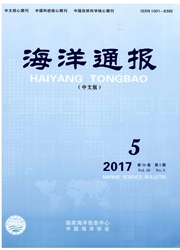

 中文摘要:
中文摘要:
污损生物是影响海洋设施安全与使用寿命的重要因素之一。由于地理位置和环境因素的差异,各近海海区污损生物群落的种类组成和结构特点会出现不同,但基本上均由双壳类和无柄蔓足类构成污损生物群落的主要框架。开展数学生态模型研究是准确预测污损生物群落形成和发展过程的关键,但这需以大量的实海调查资料及数据库的构建为基础。此外,探讨污损生物群落的演替变化机制还可为海洋恢复生态学的发展提供借鉴。因此,开展近海污损生物研究不仅在海洋产业具有极高的应用价值,而且在基础研究领域也具有重要的科学意义。
 英文摘要:
英文摘要:
The fouling settling on marine installations is a major factor affecting their safety and service life. With the development of the petroleum exploitation, aquaculture and wind power plants, more and more attention on the fouling of the offshore installations located more than 3 miles from the coast or at a depth below 50 m has been paid in the past decades. Usually the major fouling groups are bivalves (mussels or oysters) and acorn barnacles. However, due to the differences in geographic locations and environmental factors, the species components and characteristics of the fouling community may change greatly. For the development of the adequate ecological model, further collection of biotic and abiotic data and creation of a data bank are necessary. Moreover, the development of the fouling community on an offshore installation also represents a simplified model of the benthic community recovery. Therefore, the study on offshore fouling will not only have the practical applications in marine industries, but also have great significance in pure academic terms and fields.
 同期刊论文项目
同期刊论文项目
 同项目期刊论文
同项目期刊论文
 期刊信息
期刊信息
